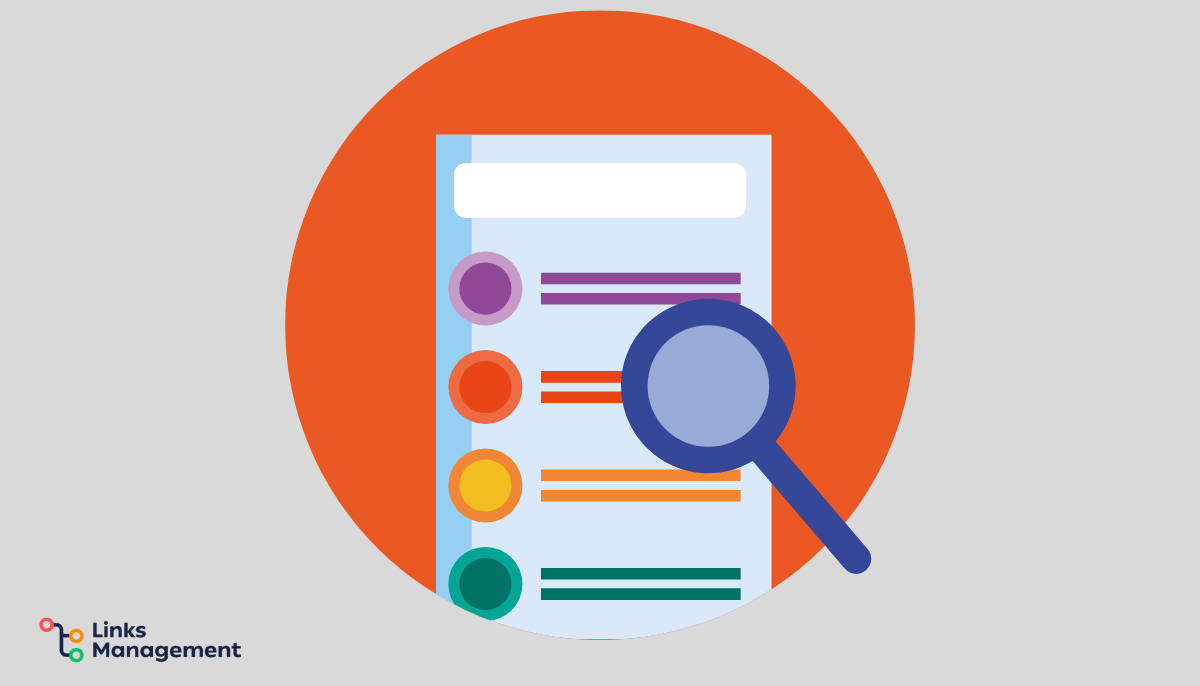The Quality of Your SEO Traffic: How to Measure It?
Are you getting traffic for your site through SEO? That’s great. But in search engine optimization, it is very important to evaluate not only the volume of traffic but also its quality. In this article, we will analyze the ways of assessing the quality of traffic from search engines.

Promoting your site can bring losses, even if the SEO results are very good. You need a thorough analysis and evaluation of SEO promotion performance to see the results objectively.
Let’s figure out how to objectively evaluate website promotion and its cost-effectiveness.
Key Indicators Of The SEO Effectiveness Of Your Traffic
- Unbranded traffic
The growth of traffic from search engines can give the illusion of effective promotion. But this is not objective if you do not divide traffic into branded and non-branded. The growth of branded queries can be due to seasonality, the launch of advertising, or the company’s growing popularity. But none of this will be the merit of search engine promotion. To assess the effectiveness of SEO, you need to track the dynamics of non-brand traffic, that is, cut off all queries related to the company name, address, branches, projects, and the like.
The result should remain non-branded search queries, which in turn may be commercial and informational. The growth of commercial non-branded queries may indicate the effective promotion of landing pages. But this is only half the battle because you will need to estimate the percentage of conversions on them.
The growth of informational queries indicates good development of the blog and website articles. Analyze the growing group of queries and optimize the articles to build even more traffic, if you have not intentionally engaged in blog development. In addition to simple SEO, supplement popular articles with conversion elements. For example, it can be a form (“Any questions?”), lead magnets (“Download a website optimization checklist”) in exchange for the user’s contact information. Add a linking block with popular articles at the end of the page to increase dwell time on the site.
We’ve prepared a few tricks and experiments for you to help you make your Adwords advertising campaigns more effective
- Leads with SEO
Leads are one of the main outcomes of promoting your website. Many people for some reason don’t emphasize the number of leads, tracking SEO results only by positions and traffic.
What is a lead:
- Call online;
- Ordering a callback;
- Various applications;
- Subscription to the newsletter;
- Downloading a presentation, document, price list;
- Booking;
A lead is an action taken by a user or potential customer. To track the number of leads, you need to set up goals in your analytics systems. A plus to analytics would be the construction of composite goals, where you will see at what stage of sending the form the user abandoned the process.
- Sales of the company thanks to SEO
The final and most important indicator of effectiveness is sales through SEO. Sales will depend on the quality of search engine optimization and properly configured segments of the target audience.

There are cases when the promotion works well, but at the very last and significant step, the potential client does not make a purchase. For example, the user comes to the landing page, studies the information, and is satisfied with the quality of services. But at the last step, he does not pay due to technical failure or incompetence of the sales manager.
Another situation is also possible. For example, when listening to the recording of the calls, you can notice that many of the leads are not targeted or misunderstand the information on the page.
Therefore, it is very useful to periodically analyze calls and applications to find out where there are problems.
- Conversion
The conversion percentage shows what percentage of users take the targeted action. You can determine the conversion rate with a simple formula:
Conversion = Leads / Search Engine Traffic * 100%
Traffic can grow while leads stay the same. As a result, conversion, as a more meaningful indicator, decreases.
Besides conversion from traffic to leads, you can also monitor conversion from lead to sales. True, in this case, it is not always the result that depends on the promotion of the site. As we have already mentioned, the reason may be poor processing of the lead by the sales department.
- The price of the lead
The number of leads can increase. However, in addition to the number of leads themselves, it is important to monitor the dynamics of the cost of attracting them. Perhaps the cost of search traffic is too high.
Cost per Lead = SEO Budget / Number of Leads
This formula will help you determine the cost of your search engine promotion costs. Sure, you can spend half of your company’s budget on SEO. But will it be worthwhile? Find out thanks to a simple formula. Such SEO tracking metrics make it much easier to analyze efficiency.
- Percentage of keywords in the Top 10
This is probably the most popular indicator by which to evaluate the effectiveness of the promotion. However, it can be misleading when approached incorrectly.
First, the number of phrases is important. They should not be too few, otherwise when several similar queries in the top will seem that the percentage of phrases in the top greatly increased. The number of phrases selected for the periodic survey depends on the volume of the project, but representativeness should not be less than 50-100.

Second, the composition is important. When compiling a semantic kernel for the survey, should include different groups of requests, do not add too uniform phrases.
Third, do not add too low-frequency phrases in the survey. A few low-frequency phrases can go to the top and show an increase in positions, but in reality, the traffic will not add much.
- Behavioral factors
Behavioral factors show the results of search engine promotion of certain pages of the site.
Behavioral factors include:
- Time spent on the site;
- Refusals;
- The number of pages viewed;
- Activity on the page (clicks, scrolling);
- Percentage of returning users;
- Adding the site to bookmarks;
Most of these indicators can be tracked in Google Analytics.
- ROMI (return on marketing investment in SEO)
ROMI shows whether your investments in website promotion will pay off. This figure can be calculated using a simple formula:
ROMI = profit from SEO / expenses on SEO * 100%
ROMI must be positive. It does not have a normative value. You can understand whether ROMI is good only in comparison with other sources of traffic.
FWhen You Can do Without SEO
In some cases, analysis of SEO traffic shows its low efficiency. What to do in such a case? Is it worth continuing to measure the attendance of traffic, or is it better to stop spending the budget on SEO? There are situations in which it is more profitable to refuse to spend money on search engine optimization. This is true when the cost of organic SEO traffic is too high.
We have selected a few conditions under which you can give up SEO.
Demand for the product is not formed
This happens when you offer a new product or service that is not yet familiar to customers or only in demand offline. It is impossible to assemble a semantic core of real user queries if no one has searched for the product on Google. In that case, there is no point in waiting for targeted traffic from search engines.
Focus on SEO in this case is not necessary. It is better to choose other tools:
- Promotion in social networks;
- Native advertising from opinion leaders;
- Advertising integration in videos and so on.
The essence of these methods is that they gradually make the brand recognizable and allow potential customers to see the product.
A small assortment of the store
SEO promotion will not work for local businesses or manufacturers of mono-brand goods.
There are several reasons for this:
- A mono-brand store’s assortment is small, which means few commercial queries can be promoted;
- Large stores that sell multiple brands and offer a large selection are often more attractive to customers;
- It is easier for aggregators and marketplaces, rather than small branded stores, to gain an advantage in the search engines.
Alternative ways of promotion for such stores are advertising on YouTube and social networks, as well as e-mail marketing. However, it is still worthwhile to optimize the site for low-frequency queries on a one-time basis.
Demand for a product or service is declining
This applies to trendy products that have already passed the peak of popularity, and the need for them becomes less with each passing month. There is no point in investing in long-term search promotion for such products. There is a risk that when you get results, and the demand will fade altogether.

Also, do not spend money on SEO, if the first lines of search results always occupy the marketplace.
Promotion in search engines will not be profitable if the first lines of results in your niche are taken by giant sites. These include bulletin boards, aggregators, and the marketplace. If your range is the same as that offered by the biggest players, the chances of squeezing them in search are minimal.
Why this is the case:
- The credibility of popular search engine aggregators is huge. It is difficult to compete with them in terms of reputation, the number of backlinks, and range size.
- For high-frequency queries, marketplaces, bulletin boards, and aggregators always get higher positions than simple online stores. They have special ranking algorithms.
- Most customers will still choose a marketplace if you are on the first page of the results.
Online stores with good usability, competitive prices, and a large assortment can still benefit from SEO even in a busy niche. But to do this, you need to focus on low-frequency queries, for which there are regular sites at the top of the output. Search traffic for unpopular queries is more productive, but small, so SEO, in this case, should not be the only channel for promotion.
What You Need To Know When Evaluating The Effectiveness Of SEO
During the evaluation of the quality of search traffic, you need to consider several external factors. First and foremost is the seasonality of the product or service. To track results correctly, it is necessary to consider the seasonality of demand. First of all, it is seasonality during the year. In some niches, it is pronounced. For example in the construction of houses, the sale of building materials, travel, and others. In such cases, it is more correct to compare the current period to the same period a year earlier.
It is also important to consider the current trend in demand. At first glance, you might not see any difference between the seasonality of demand and the trend of demand, but they are different concepts. Comparing traffic to demand trend is all about comparing traffic growth to demand growth over the same period. For example, if you see that your traffic increased by 20% in a quarter, then you still have the potential to move forward.
Conclusion
We have analyzed various factors of the quality of search traffic and answered the question of how to measure website traffic. All the necessary information you can find in Google Analytics if you use this particular search engine for promotion. Measuring SEO is very important at all stages of work with the site. So follow our recommendations and do not forget about the importance of other tools. For example, backlinks.
Enter URL & See What We Can Do Submit the form to get a detailed report, based on the comprehensive seo analysis.